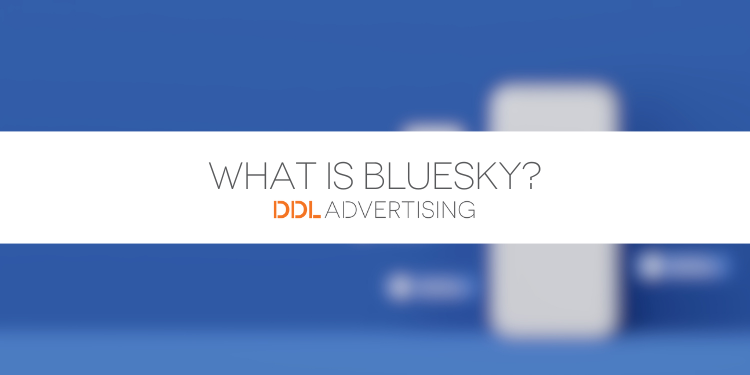
Bluesky: The New Social Networking App Changing the Game and What It Means for Marketers

Introduction to Bluesky
Bluesky is gaining attention as a fresh, innovative social networking app that’s redefining digital interaction. Unlike mainstream platforms such as X (formerly Twitter), Facebook, and Instagram, Bluesky offers a unique, decentralized experience that grants users more control over their data and feed. Backed initially by Twitter co-founder Jack Dorsey, Bluesky’s mission is to create a social media platform free from intrusive ads and centralized algorithms, prioritizing user autonomy. This new model opens doors for marketers, requiring fresh strategies focused on authenticity and community engagement.
In this post, we’ll explore what Bluesky is, who’s using it, why people are drawn to it, and what marketers need to know to succeed on this emerging platform.
What is Bluesky?
Bluesky is a social networking app built on the AT Protocol (Authenticated Transfer Protocol), which allows users to navigate between networks while maintaining control over their data and content. Unlike traditional social media platforms, Bluesky’s decentralized model empowers users to manage the algorithms that shape their feeds. This independence fosters a more personalized and private experience, as users can select or even develop custom feeds that reflect their interests without being driven by a centralized algorithm.
In a digital landscape dominated by ad-driven platforms, Bluesky’s user-centric approach is a refreshing alternative. People can connect based on shared interests and genuine interactions rather than commercial content. This focus on user control and decentralized content curation sets Bluesky apart, making it an appealing option for those seeking a less commercialized experience.
Who is Using Bluesky
Bluesky is drawing a diverse user base that values privacy, autonomy, and authentic interaction. Key user groups include:
- Tech and Privacy Enthusiasts: Those who prioritize data privacy and ethical technology practices are among Bluesky’s early adopters. The app’s user-controlled environment appeals to individuals who value transparency and autonomy in their social media experience.
- Content Creators and Influencers: Bluesky provides a platform where content creators can engage directly with their audience without algorithmic restrictions. This gives creators more control over their visibility and allows for more authentic connections.
- Former Twitter Users: Many Bluesky users are former Twitter enthusiasts seeking an alternative that retains a similar interface but without ad overload or algorithmic interference. For these users, Bluesky’s familiar, user-centered design is a welcome change.
- Developers and Innovators: Bluesky’s open-source structure invites developers to experiment and innovate with algorithms, making it ideal for tech-forward users interested in shaping the social media landscape.
- Younger Generations (Gen Z and Millennials): Gen Z and Millennials, wary of traditional advertising and data collection, gravitate toward Bluesky for its transparency, ethical design, and user-centered approach.
Why People Are Navigating Toward Bluesky
Bluesky’s appeal stems from its dedication to user privacy, control over content, and a more tailored social experience. Unlike ad-saturated platforms, Bluesky allows users to interact based on interests rather than commercial content. With options to select personalized feeds and create unique timelines, Bluesky offers a level of control rare on traditional social networks.
This decentralized, user-first approach fosters a community-driven environment many find refreshing. Bluesky has become a go-to platform for users who value freedom, connection, and authenticity—qualities increasingly scarce on major social media sites.
What Marketers Need to Know About Bluesky
Bluesky’s distinct structure presents new opportunities for marketers, but success here requires a shift from traditional social media tactics. Here’s how marketers can adapt:
- Prioritize Community Engagement Over Ads: Since Bluesky doesn’t depend on ad revenue, marketers must focus on organic engagement. Meaningful content that resonates with users and builds a brand-centered community is essential.
- Collaborate with Authentic Influencers: Influencers on Bluesky connect directly with followers, as they aren’t competing with ad-driven algorithms. Brands should prioritize authentic partnerships with influencers who genuinely align with their values.
- Leverage Customized Content Options: Bluesky’s flexible algorithms enable marketers to tailor content for different audience segments. This customization allows brands to experiment and gain insights without the constraints of traditional algorithms.
- Align with Bluesky’s Core Values: Bluesky users appreciate privacy, transparency, and ethical practices. Brands that share these values can establish trust and loyalty, gaining an advantage over competitors.
- Take Advantage of Early Entry: As Bluesky is still emerging, fewer brands are competing for attention. Establishing a presence now can help brands gain a loyal following in this values-driven community.
- Redefine Success Metrics: Without ad-driven analytics, marketers on Bluesky should focus on engagement metrics, community feedback, and insights from direct interactions. Success here emphasizes quality engagement over impressions or clicks.
The Future of Bluesky and Marketing
Bluesky’s rise signals a shift in user preferences toward privacy, autonomy, and community-driven platforms. For marketers, this means adapting to an environment where successful engagement relies more on genuine, value-driven connections than on ad spending.
As Bluesky continues to grow, it could set new standards for brand-audience relationships. Marketers have an opportunity to embrace user-centered strategies that resonate with Bluesky’s mission of putting people first. By staying true to Bluesky’s principles and fostering authentic interactions, brands can build trust and loyalty, redefining digital marketing within social media.
Bluesky is an exciting platform that could reshape online community engagement. Whether you’re a marketer, content creator, or curious user, Bluesky offers a refreshing social network model that prioritizes the user.
Frequently Asked Questions
- What does Bluesky refer to?
Bluesky refers to a decentralized social media initiative that emerged from Twitter, aimed at creating an open and user-governed network for online communication. Launched in 2021 by former Twitter CEO Jack Dorsey, Bluesky seeks to address issues of content moderation, data privacy, and platform control by allowing users to own their data and choose how it is shared and moderated. The project utilizes a protocol called the Authenticated Transfer Protocol (ATP), which enables different social media platforms to interoperate while giving users the freedom to migrate their accounts and content across various services seamlessly. - Who created Bluesky?
Bluesky was initiated by Twitter co-founder Jack Dorsey in late 2019 as a project aimed at developing a decentralized social media protocol. The goal of Bluesky is to create an open and user-controlled platform that allows for greater freedom of expression while addressing issues such as misinformation and data privacy. In 2021, Dorsey announced the formation of a team dedicated to this vision, which has since evolved into a collaborative effort involving various developers and researchers focused on building a sustainable ecosystem for social media interactions. As of 2024, Bluesky has gained traction as an innovative approach to rethinking how social networks operate. - What is the purpose of Bluesky?
Bluesky is a decentralized social media initiative that aims to create an open and user-controlled platform for online communication. Its primary purpose is to empower users by providing them with greater control over their data and the content they engage with, while also promoting transparency and interoperability among different social networks. By leveraging blockchain technology, Bluesky seeks to reduce the influence of centralized entities on social interactions and foster a more equitable digital environment where users can freely express themselves without fear of censorship or manipulation. Ultimately, Bluesky envisions a future where social media serves as a tool for genuine connection and community building, rather than a battleground for corporate interests. - Is Bluesky a social media platform?
Yes, Bluesky is indeed a social media platform that emerged as a project initiated by Twitter in 2019. It was designed to explore and develop decentralized social networking protocols, allowing users to have more control over their data and interactions. Launched in its beta version in 2023, Bluesky aims to create a user-friendly environment where individuals can connect, share content, and engage with communities while promoting transparency and reducing the influence of centralized algorithms on user experience. The platform emphasizes privacy and user autonomy, setting it apart from traditional social media networks. - How does Bluesky work?
Bluesky operates as a decentralized social media protocol designed to give users more control over their online interactions and data. At its core, Bluesky utilizes blockchain technology to create a network where users can manage their own identities and content without relying on a central authority. This means that users can choose how their data is shared and with whom, fostering a more transparent and user-centric environment. The platform allows for the development of various applications that can connect to this protocol, enabling diverse experiences while maintaining interoperability across different services. By prioritizing privacy and user autonomy, Bluesky aims to redefine social media dynamics in a way that empowers individuals rather than corporations. - What are the features of Bluesky?
Bluesky is a decentralized social media platform that aims to provide users with greater control over their online interactions and content. One of its key features is the use of a protocol called AT Protocol, which allows for interoperability between different social media applications, enabling users to move their data seamlessly across platforms. Additionally, Bluesky emphasizes user privacy and security by implementing robust encryption methods and offering customizable privacy settings. The platform also includes innovative tools for content moderation, allowing communities to establish their own rules and guidelines while minimizing harmful behavior. Furthermore, Bluesky supports a variety of content formats, including text, images, and videos, fostering a rich and diverse user experience. - When was Bluesky launched?
Bluesky was officially launched in early 2023, following its initial announcement by Twitter co-founder Jack Dorsey in late 2019. The project aimed to create a decentralized social media protocol that would allow users greater control over their data and content moderation. After several years of development and community engagement, Bluesky opened its doors to the public, inviting users to explore its innovative approach to social networking and digital communication. - Is Bluesky available to everyone?
As of 2024, Bluesky is gradually expanding its availability to a broader audience, but it is not yet fully open to everyone. Initially launched as an invite-only platform, Bluesky has been working on refining its features and user experience based on feedback from early adopters. The team behind Bluesky aims to ensure a stable and engaging environment before rolling out access to the general public. While many users can now join through invitations or by signing up for waitlists, full accessibility is expected to be achieved in the coming months as the platform continues to grow and evolve. - What technology powers Bluesky?
Bluesky is powered by a decentralized social networking protocol known as the AT Protocol, which emphasizes user control and data portability. This technology allows users to own their content and manage their interactions across various platforms without being locked into a single service provider. The AT Protocol employs advanced cryptographic techniques to ensure secure communication and identity verification, while also incorporating machine learning algorithms to enhance content discovery and moderation. By leveraging these technologies, Bluesky aims to create a more open and user-centric social media experience that prioritizes privacy and freedom of expression. - How is Bluesky different from other platforms?
Bluesky distinguishes itself from other social media platforms through its unique approach to decentralization and user control. Unlike traditional platforms that operate on centralized servers, Bluesky utilizes a decentralized protocol that allows users to own their data and have greater autonomy over their online interactions. This means that users can choose how their content is shared and who has access to it, fostering a more transparent environment. Additionally, Bluesky emphasizes community moderation, enabling users to participate in the governance of the platform and create tailored experiences that reflect their values. By prioritizing user agency and privacy, Bluesky aims to create a more equitable digital space compared to conventional social media networks.






